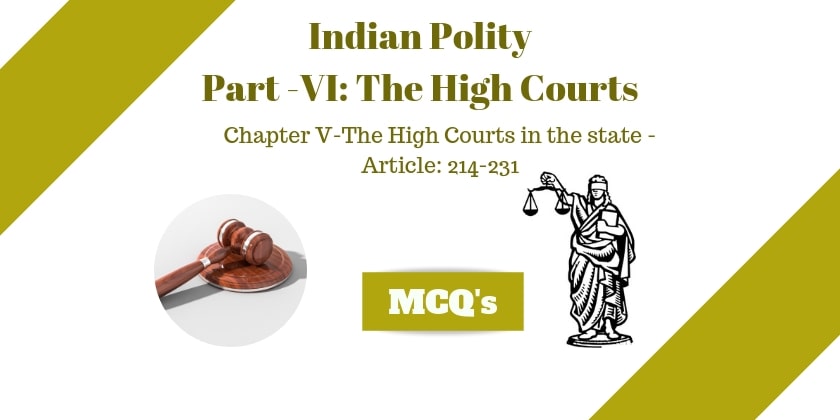11. Which among the following is/are NOT a requirement to be a judge of the High Court?
A. He should be a citizen of India
B. He should have held a judicial office in India for minimum 10 years
C. He should have been an advocate of a high court for at least 10 years
D. He should be over 40 years of age
[toggle] Answer – D[/toggle]
12. The federal court of India was established in
A. 1930
B. 1935
C. 1947
D. 1950
[toggle] Answer – B [/toggle]
13. Which Article in the Constitution empowers the High Court with the power of writ jurisdictions?
A. Article 226
B. Article 225
C. Article 370
D. Article 278
[toggle] Answer – A[/toggle]
14. How can the High Court Judge be removed?
A. A resolution passed by the general majority of the Parliament
B. By the Supreme Court on the advice of the President
C. A resolution passed by the special majority of the respective state
D. A resolution passed by the Parliament With a special majority
[toggle] Answer – D[/toggle]
15. The High Court has the power to issue writs under
A. Article 224
B. Article 226
C. Article 225
D. Article 227
[toggle] Answer – A[/toggle]
16. Who does not participate in the appointment of the High Court Judge?
A. Governor of the State
B. Chief Minister of the state
C. Chief Justice of the High Court of the respective state
D. President of India
[toggle] Answer – B [/toggle]
17. Who can extend the jurisdiction of a High Court?
A. Parliament of India
B. President of India
C. Supreme Court of India
D. The governor of the state
[toggle] Answer – A[/toggle]
18. Which of the following amendments curtailed the power of Judicial review of the Supreme Court and the High Courts?
A. 24th
B. 26th
C. 42th
D. 44th
[toggle] Answer – C[/toggle]
19. The Judges of High Court are administered an oath of office by
A. The Chief Justice of High Court
B. The President of India
C. The Chief Justice of India
D. Governor of the State
[toggle] Answer – A[/toggle]
20. Delhi High Court was established in?
A. 1966
B. 1968
C. 1974
D. 1980
[toggle] Answer – A[/toggle]

